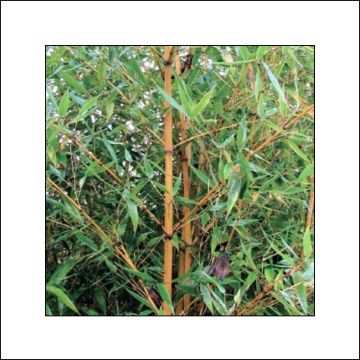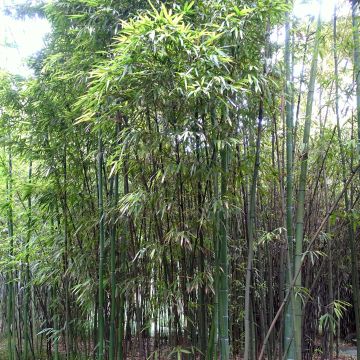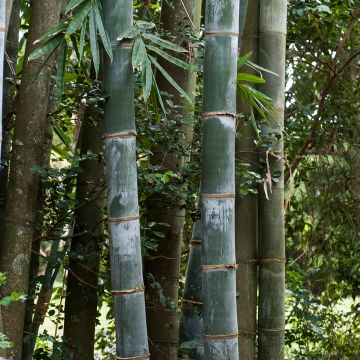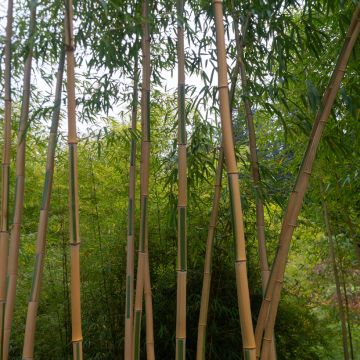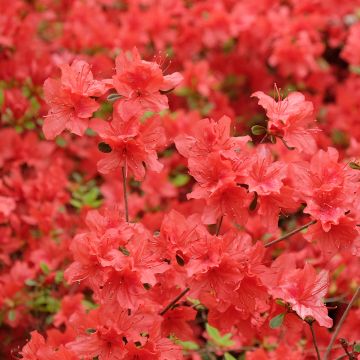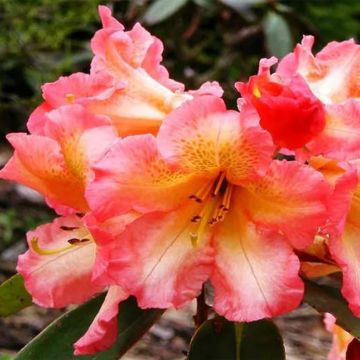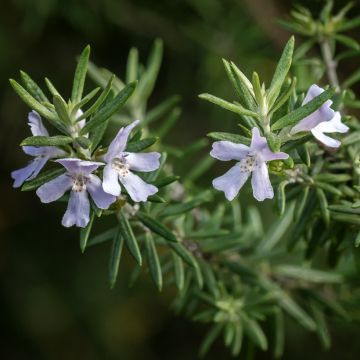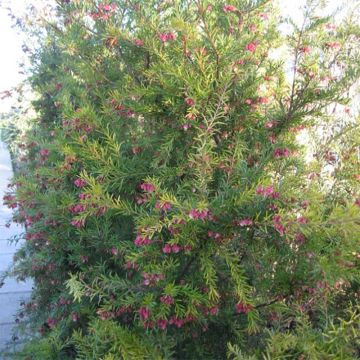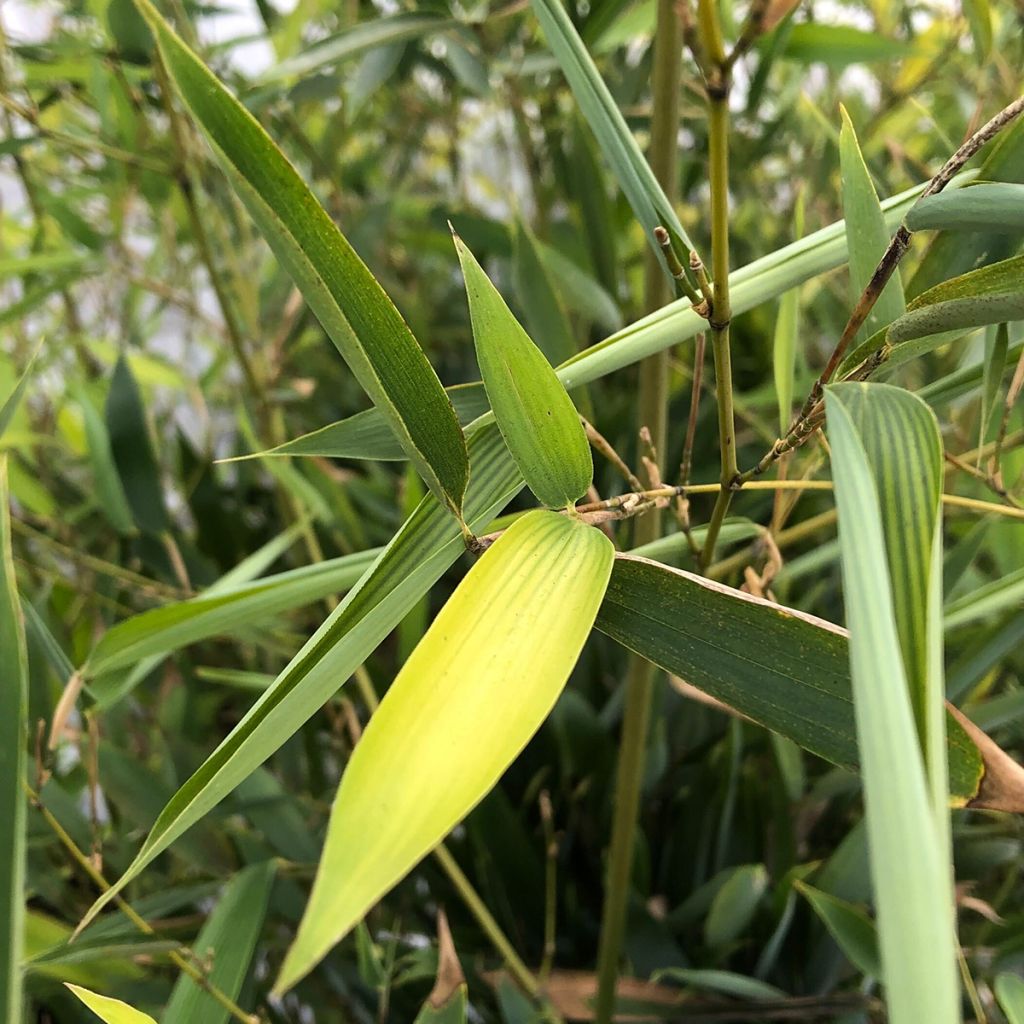

Phyllostachys heteroclada - Bambou en écailles de poisson


Phyllostachys heteroclada - Bambou en écailles de poisson


Phyllostachys heteroclada - Bambou en écailles de poisson
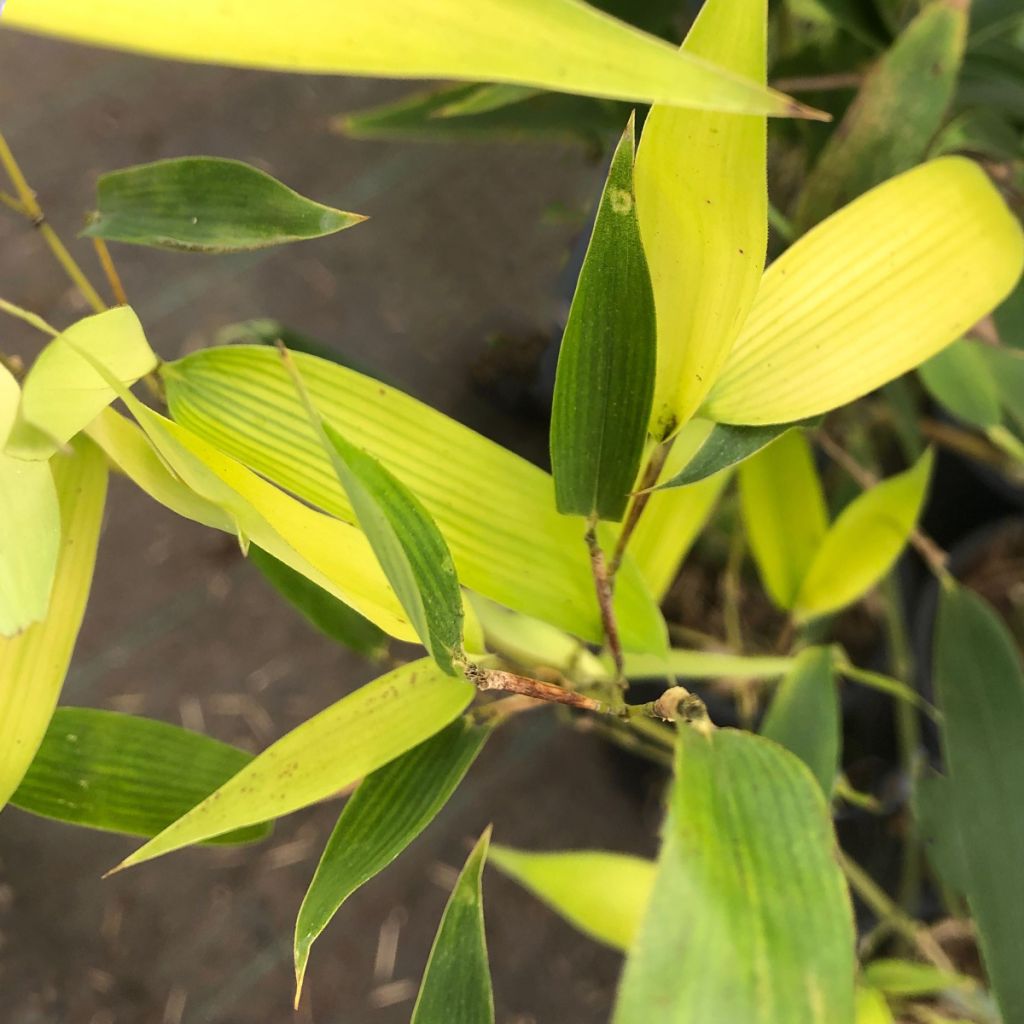

Phyllostachys heteroclada - Bambou en écailles de poisson


Phyllostachys heteroclada - Bambou en écailles de poisson
Phyllostachys heteroclada - Giant Bamboo
Phyllostachys heteroclada
Giant Bamboo
Thank you very much, the bamboo is beautiful and healthy, top delivery with careful packaging.
Pierre , 27/10/2024
Order in the next for dispatch today!
Dispatch by letter from €3.90.
Delivery charge from €5.90 Oversize package delivery charge from €6.90.
Current delivery delay: 1 day.
More information
This item is not available in your country.
Schedule delivery date,
and select date in basket
This plant carries a 24 months recovery warranty
More information
We guarantee the quality of our plants for a full growing cycle, and will replace at our expense any plant that fails to recover under normal climatic and planting conditions.
Oversize package: home delivery by special carrier from €6.90 per order..
Express home delivery from €8.90.
Does this plant fit my garden?
Set up your Plantfit profile →
Description
Phyllostachys heteroclada is a particularly valuable bamboo for wet and poorly drained areas. It is one of the few species capable of thriving in these difficult conditions, to the extent that in China, its country of origin, it is nicknamed the water bamboo. Very elegant and of medium size, it displays a slender habit with its thin green culms, slightly pruinose at first. Its fine foliage, also green, gracefully droops, capturing the wind to come to life at the first opportunity. Hardy, it grows in neutral to acidic soils, in full sun or partial shade, and can form beautiful clumps in isolation or windbreak hedges.
This bamboo belongs to the family Poaceae, or grasses. While some species can reach tens of metres in height and form hard, wood-like culms, they are not trees, but grasses. There are over a thousand species of bamboo, distributed on all continents except Antarctica.
Phyllostachys heteroclada is native to China, where it grows south of the Yangtze River, in forests and along streams that descend from the mountains. Its vernacular name, shui zhu, literally means water (shui) bamboo (zhu), which reflects its ability to grow in waterlogged soils. It is the best species (along with P. atrovaginata) for these difficult situations, because contrary to popular belief, bamboo likes coolness and humidity in general, but not waterlogged soils. This species owes this resistance to a morphological peculiarity: its rhizomes are traversed by air canals that allow the plant to breathe in conditions that are normally suffocating for other species. This enables it to withstand fairly long periods of excess water, even though, on the other hand, it is perfectly capable of growing in better-drained soil, as long as it remains sufficiently cool, especially in summer.
It belongs to the category of medium-sized bamboo, reaching 4 to 7m (13 to 23ft) in height. Its culms have a beautiful green colour, slightly pruinose when young. Their limited diameter, 3 to 5cm (1 to 2in), gives them a grace and lightness that are appreciated in ornamental gardens. This Phyllostachys forms an upright clump and develops rather fine foliage, with leaves measuring up to 12cm (5in) long and less than 2cm (1in) wide. With a beautiful medium green colour, this foliage is slightly weeping, adding to the aesthetic appeal of the clumps. Very dense and evergreen, it is particularly appreciated for creating windbreak hedges.
This robust bamboo is not afraid of the cold, as it can withstand -20°C (1°F). It is rather adaptable, growing in full sun as well as partial shade. It prefers fertile, humus-rich, moist soils with a neutral or slightly acidic pH. It has a moderate spread, making it suitable for gardens of a certain size where it can develop without hindrance. In smaller areas, it is possible to contain it by installing "anti-rhizome barriers" from the time of planting, which are resin plates planted vertically in the ground. It is imperative to have them protrude from the soil by about 10cm (4in), otherwise the rhizomes will easily pass over them. However, it should be noted that over time, it is difficult to completely prevent the spread of this type of plant...
Phyllostachys heteroclada is the bamboo to plant by a body of water or on a bank. By reflecting in the water mirror, it creates an incomparable romantic atmosphere. You can plant other plants adapted to very wet soils alongside it, such as the majestic Bald Cypress (Taxodium distichum) whose pneumatophores ensure it receives air in the same way as the air canals in the bamboo rhizomes. It is one of the few deciduous conifers, whose beautiful light foliage turns reddish in autumn, creating a magnificent contrast with the green of the Phyllostachys. Less well-known, Nyssa sylvatica is a superb tree with a pyramidal habit, whose foliage turns orange-red in autumn. In not too cold climates, Gunnera manicata or Giant Brazilian Rhubarb, a perennial with oversized leaves, will create an interesting contrast with the bamboo's fine leaves. And to perfect this scene, a few Water Lilies planted in the water near the bank will enchant the summer with their sculptural flowering...
Report an error about the product description
Plant habit
Foliage
Botanical data
Phyllostachys
heteroclada
Poaceae
Giant Bamboo
China
Other Phyllostachys
Planting and care
Phyllostachys heteroclada is preferably planted in spring or autumn, with the ideal period being between September and November, when the plant develops its rootstock. Hardy to approximately -20°C (1°F), this bamboo is one of the few that can grow in waterlogged soils. Of course, it will also grow in cool and well-drained soils, but due to its origins, it will need moisture to thrive and will not succeed in drying soil.
Choose the wettest location in your garden to plant it, in full sun or partial shade. Soak the root ball in a bucket to completely saturate it while you dig the planting hole. Optionally, add slightly acidic planting compost to the existing soil (50/50) to increase water retention and water this mixture. Place the root ball in the hole, backfill around it, and water again on the surface. Mulch the young stump to maintain humidity and water generously during the season.
From the second year onwards, you can apply nitrogen fertilizer in February-March and then in July-August. Divide old clumps in spring. Beware of slugs that like young shoots. Limit the spread of the trailing rootstock of this bamboo by installing "anti-rhizome barriers" from the start, which are resin plates inserted vertically into the ground. The anti-rhizome barrier should be buried vertically, leaving a height of 10cm (4in) exposed (otherwise the rootstock will grow above it) and should be tilted 15° (59°F) towards the plant.
In terms of maintenance, bamboo is not demanding: remember to weed around the base, at least initially, until the dead leaves on the ground form a natural mulch. An application of nitrogen fertilizer (well-rotted manure or liquid fertilizer) in spring and autumn can be beneficial.
Planting period
Intended location
Care
-
, onOrder confirmed
Reply from on Promesse de fleurs
Evergreen shrubs
Haven't found what you were looking for?
Hardiness is the lowest winter temperature a plant can endure without suffering serious damage or even dying. However, hardiness is affected by location (a sheltered area, such as a patio), protection (winter cover) and soil type (hardiness is improved by well-drained soil).

Photo Sharing Terms & Conditions
In order to encourage gardeners to interact and share their experiences, Promesse de fleurs offers various media enabling content to be uploaded onto its Site - in particular via the ‘Photo sharing’ module.
The User agrees to refrain from:
- Posting any content that is illegal, prejudicial, insulting, racist, inciteful to hatred, revisionist, contrary to public decency, that infringes on privacy or on the privacy rights of third parties, in particular the publicity rights of persons and goods, intellectual property rights, or the right to privacy.
- Submitting content on behalf of a third party;
- Impersonate the identity of a third party and/or publish any personal information about a third party;
In general, the User undertakes to refrain from any unethical behaviour.
All Content (in particular text, comments, files, images, photos, videos, creative works, etc.), which may be subject to property or intellectual property rights, image or other private rights, shall remain the property of the User, subject to the limited rights granted by the terms of the licence granted by Promesse de fleurs as stated below. Users are at liberty to publish or not to publish such Content on the Site, notably via the ‘Photo Sharing’ facility, and accept that this Content shall be made public and freely accessible, notably on the Internet.
Users further acknowledge, undertake to have ,and guarantee that they hold all necessary rights and permissions to publish such material on the Site, in particular with regard to the legislation in force pertaining to any privacy, property, intellectual property, image, or contractual rights, or rights of any other nature. By publishing such Content on the Site, Users acknowledge accepting full liability as publishers of the Content within the meaning of the law, and grant Promesse de fleurs, free of charge, an inclusive, worldwide licence for the said Content for the entire duration of its publication, including all reproduction, representation, up/downloading, displaying, performing, transmission, and storage rights.
Users also grant permission for their name to be linked to the Content and accept that this link may not always be made available.
By engaging in posting material, Users consent to their Content becoming automatically accessible on the Internet, in particular on other sites and/or blogs and/or web pages of the Promesse de fleurs site, including in particular social pages and the Promesse de fleurs catalogue.
Users may secure the removal of entrusted content free of charge by issuing a simple request via our contact form.
The flowering period indicated on our website applies to countries and regions located in USDA zone 8 (France, the United Kingdom, Ireland, the Netherlands, etc.)
It will vary according to where you live:
- In zones 9 to 10 (Italy, Spain, Greece, etc.), flowering will occur about 2 to 4 weeks earlier.
- In zones 6 to 7 (Germany, Poland, Slovenia, and lower mountainous regions), flowering will be delayed by 2 to 3 weeks.
- In zone 5 (Central Europe, Scandinavia), blooming will be delayed by 3 to 5 weeks.
In temperate climates, pruning of spring-flowering shrubs (forsythia, spireas, etc.) should be done just after flowering.
Pruning of summer-flowering shrubs (Indian Lilac, Perovskia, etc.) can be done in winter or spring.
In cold regions as well as with frost-sensitive plants, avoid pruning too early when severe frosts may still occur.
The planting period indicated on our website applies to countries and regions located in USDA zone 8 (France, United Kingdom, Ireland, Netherlands).
It will vary according to where you live:
- In Mediterranean zones (Marseille, Madrid, Milan, etc.), autumn and winter are the best planting periods.
- In continental zones (Strasbourg, Munich, Vienna, etc.), delay planting by 2 to 3 weeks in spring and bring it forward by 2 to 4 weeks in autumn.
- In mountainous regions (the Alps, Pyrenees, Carpathians, etc.), it is best to plant in late spring (May-June) or late summer (August-September).
The harvesting period indicated on our website applies to countries and regions in USDA zone 8 (France, England, Ireland, the Netherlands).
In colder areas (Scandinavia, Poland, Austria...) fruit and vegetable harvests are likely to be delayed by 3-4 weeks.
In warmer areas (Italy, Spain, Greece, etc.), harvesting will probably take place earlier, depending on weather conditions.
The sowing periods indicated on our website apply to countries and regions within USDA Zone 8 (France, UK, Ireland, Netherlands).
In colder areas (Scandinavia, Poland, Austria...), delay any outdoor sowing by 3-4 weeks, or sow under glass.
In warmer climes (Italy, Spain, Greece, etc.), bring outdoor sowing forward by a few weeks.


































